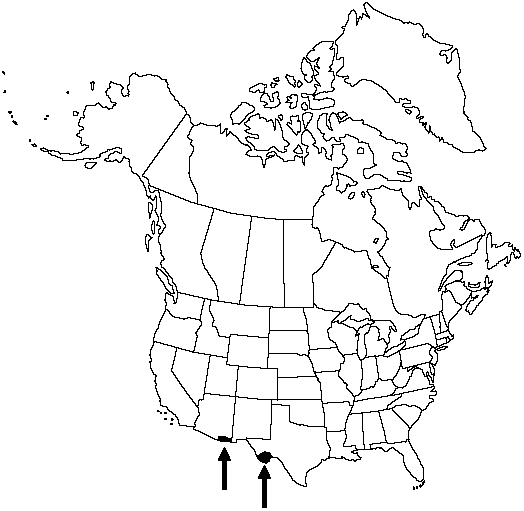Difference between revisions of "Pellaea ternifolia subsp. arizonica"
Contr. Univ. Michigan Herb. 19: 42. 1993.
Treatment appears in FNA Volume 2.
FNA>Volume Importer |
FNA>Volume Importer |
||
| Line 46: | Line 46: | ||
|publication year=1993 | |publication year=1993 | ||
|special status= | |special status= | ||
| − | |source xml=https://jpend@bitbucket.org/aafc-mbb/fna-data-curation.git/src/ | + | |source xml=https://jpend@bitbucket.org/aafc-mbb/fna-data-curation.git/src/f50eec43f223ca0e34566be0b046453a0960e173/coarse_grained_fna_xml/V2/V2_162.xml |
|genus=Pellaea | |genus=Pellaea | ||
|species=Pellaea ternifolia | |species=Pellaea ternifolia | ||
Revision as of 20:48, 16 December 2019
Petiole rounded or slightly flattened adaxially in distal portion; rachis glabrous or with a few widely scattered hairs; pinnae completely glabrous; largest ultimate segments (excluding terminal pinnae) usually more than 18 mm; spores averaging 46–53 µm diam. 2n = 116.
Phenology: Sporulating summer–fall.
Habitat: Cliffs and rocky slopes, on a variety of acidic substrates including quartzite and granite
Elevation: 1700–2400 m
Distribution

Ariz., Tex., n Mexico.
Discussion
Pellaea ternifolia subsp. arizonica and P. wrightiana hybridize; the hybrids are morphologically intermediate tetraploids and have malformed spores.
Selected References
None.
Lower Taxa
None.